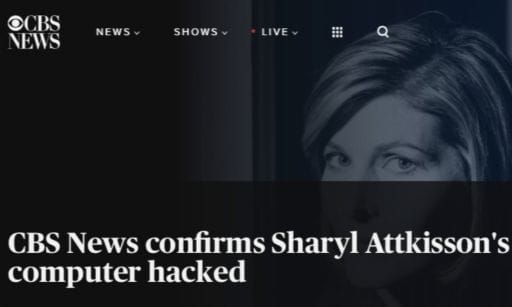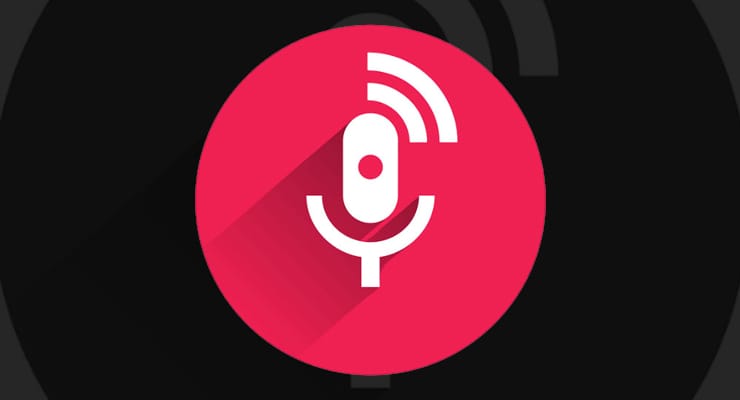
The following is an excerpt from an investigative report by Paul D. Thacker appearing at bmj.com:
For most of 2020, the notion that SARS-CoV-2 may have originated in a lab in Wuhan, China, was treated as a thoroughly debunked conspiracy theory. Only conservative news media sympathetic to President Donald Trump and a few lonely reports dared suggest otherwise. But that all changed in the early months of 2021, and today most outlets across the political spectrum agree: the “lab leak” scenario deserves serious investigation.
Understanding this dramatic U turn on arguably the most important question for preventing a future pandemic, and why it took nearly a year to happen, involves understanding contemporary science journalism.
A conspiracy to label critics as conspiracy theorists
Scientists and reporters contacted by The BMJ say that objective consideration of covid-19’s origins went awry early in the pandemic, as researchers who were funded to study viruses with pandemic potential launched a campaign labelling the lab leak hypothesis as a “conspiracy theory.”
A leader in this campaign has been Peter Daszak, president of EcoHealth Alliance, a non-profit organisation given millions of dollars in grants by the US federal government to research viruses for pandemic preparedness.1 Over the years EcoHealth Alliance has subcontracted out its federally supported research to various scientists and groups, including around $600 000 (£434 000; €504 000) to the Wuhan Institute of Virology.1
Shortly after the pandemic began, Daszak effectively silenced debate over the possibility of a lab leak with a February 2020 statement in the Lancet.2 “We stand together to strongly condemn conspiracy theories suggesting that covid-19 does not have a natural origin,” said the letter, which listed Daszak as one of 27 coauthors. Daszak did not respond to repeated requests for comment from The BMJ.
“It’s become a label you pin on something you don’t agree with,” says Nicholas Wade, a science writer who has worked at Nature, Science, and the New York Times. “It’s ridiculous, because the lab escape scenario invokes an accident, which is the opposite of a conspiracy.”
But the effort to brand serious consideration of a lab leak a “conspiracy theory” only ramped up. Filippa Lentzos, codirector of the Centre for Science and Security Studies at King’s College, London, told the Wall Street Journal, “Some of the scientists in this area very quickly closed ranks.”3 She added, “There were people that did not talk about this, because they feared for their careers. They feared for their grants.”
Daszak had support. After he wrote an essay for the Guardian in June 2020 attacking the former head of MI6 for saying that the pandemic could have “started as an accident,” Jeremy Farrar, director of the Wellcome Trust and co-signer of the Lancet letter, promoted Daszak’s essay on Twitter, saying that Daszak was “always worth reading.”4
Daszak’s behind-the-scenes role in orchestrating the statement in the Lancet came to light in November 2020 in emails obtained through freedom of information requests by the watchdog group US Right To Know.
“Please note that this statement will not have EcoHealth Alliance logo on it and will not be identifiable as coming from any one organization or person,” wrote Daszak in a February email, while sending around a draft of the statement for signatories.5 In another email, Daszak considered removing his name from the statement “so it has some distance from us and therefore doesn’t work in a counterproductive way.”6
Several of the 27 scientists who signed the letter Daszak circulated did so using other professional affiliations and omitted reporting their ties to EcoHealth Alliance.3
For Richard Ebright, professor of molecular biology at Rutgers University in New Jersey and a biosafety expert, scientific journals were complicit in helping to shout down any mention of a lab leak. “That means Nature, Science, and the Lancet,” he says. In recent months he and dozens of academics have signed several open letters rejecting conspiracy theory accusations and calling for an open investigation of the pandemic’s origins.789
“It’s very clear at this time that the term ‘conspiracy theory’ is a useful term for defaming an idea you disagree with,” says Ebright, referring to scientists and journalists who have wielded the term. “They have been successful until recently in selling that narrative to many in the media.”
The Lancet’s editor in chief, Richard Horton, did not respond to repeated requests for comment but, after The BMJ had sent him questions, the Lancet expanded Daszak’s conflicts of interest on the February statement and recused him from working on its task force looking into the pandemic’s origin.1011
The Lancet letter ultimately helped to guide almost a year of reporting, as journalists helped to amplify Daszak’s message and to silence scientific and public debate. “We’re in the midst of the social media misinformation age, and these rumours and conspiracy theories have real consequences,” Daszak told Science.12 Months later in Nature, he again criticised “conspiracies” that the virus could have come from the Wuhan Institute of Virology and complained about “politically motivated organisations” requesting his emails.13
That summer Scientific American, one of the oldest and best known popular science magazines in America, published a complimentary profile of Daszak’s colleague, Shi Zhengli, a centre director at the Wuhan Institute of Virology, which has been funded by EcoHealth Alliance.14
EcoHealth Alliance and the Wuhan Institute of Virology earned additional sympathetic reporting after the US National Institutes of Health (NIH) cancelled its grant to EcoHealth Alliance in April last year—allegedly on President Trump’s order—because of its ties to Wuhan, a decision protested by 77 Nobel laureates and 31 scientific societies.15 (The NIH has subsequently awarded EcoHealth Alliance new funding.)
Efforts to characterise the lab leak scenario as unworthy of serious consideration were far reaching, sometimes affecting reporting that had first appeared well before the covid-19 pandemic. For example, in March 2020 Nature Medicine added an editor’s note (“Scientists believe that an animal is the most likely source of the coronavirus”) to a 2015 paper on the creation of a hybrid version of a SARS virus, co-written by Shi.16
Wade explains, “Science journalists differ a lot from other journalists in that they are far less sceptical of their sources and they see their main role as simply to explain science to the public.” This, he says, is why they began marching in unison behind Daszak.
The U turn
By the end of 2020, just a handful of journalists had dared to seriously discuss the possibility of a lab leak. In September, Boston magazine reported on a preprint that found the virus unlikely to have come from the Wuhan seafood market, as Daszak has argued, and that it seemed too well adapted to humans to have arisen naturally. However, the story failed to garner much attention, similarly to a little noticed investigative report by the Associated Press in December that exposed how the Chinese government was clamping down on research into covid-19’s origins.
In January this year, New York magazine ran a sprawling story detailing how the pandemic could have started with a leak from the lab in Wuhan. The hypothetical scenario: “SARS-CoV-2, the virus that causes covid-19, began its existence inside a bat, then it learned how to infect people in a claustrophobic mine shaft, and then it was made more infectious in one or more laboratories, perhaps as part of a scientist’s well-intentioned but risky effort to create a broad-spectrum vaccine.” Scientists and their media allies swiftly criticised the article. (Continued…)
Click on the link below to continue reading:
https://www.bmj.com/content/374/bmj.n1656.full?ijkey=aFCGt8ZiU7Z8y0w&keytype=ref
Order “Slanted: How the News Media Taught Us to Love Censorship and Hate Journalism” by Sharyl Attkisson today at Harper Collins, Amazon, Barnes & Noble, Books a Million, IndieBound, Bookshop!




Many people long ago concluded that the CCP planned the release and spread.
At some stage this will be established beyond doubt.
I agree fully.
I wonder how long it will take to get that news out there. It never seemed like something accidental.
The unsubstantiated hair-brain idea that a virus, decided that it should immediately “naturally” mutate to infect humans because it knew the bat that carried it was stuck in a claustrophobic mine shaft beggars belief….THEN the CCP collected the bat (too stupid to leave the cave to hunt) carrying the virus and decided it would do the world a favor by creating an all-encompassing vaccine to prevent it from harming humans. THEN this infinitely malleable unbelievable story gets better….they first had to artificially modify the virus beyond its mine-cave inspired ability to “naturally” infect humans and make it even more transmissible to humans so they could study it and create a world-saving vaccine …. If you’re buying this story, I have an alien space ship for sale–alien included, no extra charge.
No, I do not believe the media fell victim to anything.
I believe the media and the DNC were fully involved after the fact. Biden & Hunter were had been given over millions of dollars of Chinese money and had to do something to earn his way.
I agree with Kevin–but with a caveat: Is it merely a coincidence that the WEF (as reported on Time or Newsweek’s cover-“The Great Reset” ) has been onboard for a diabolical transfer of wealth from the elite to the elite? …[“You will own nothing and be happy.”] and that this monetary Reset just happened to coincide with a scheduled global pandemic? “Event 201” was more than a mere exercise, and the many conflicts of interest among all ‘stakeholders’ is beyond coincidence. If 8 billion people are on a vaccine dose schedule this represents a profit windfall of epic proportions(some estimates at $600-$700 Trillion), and an optimal model for the control of the global population. Why won’t the MSM use the term, “Techno-Fascism?’…[maybe because Pharma owns the Media.]
Off topic, what have you learned about the connection between USAID and the current Cuba situation. Particularly, Mobile Accord and USAID and their involvement in developing social platforms overseas. Like Cuba, for example. Where else have they delivered these platforms and for who’s benefit? Is there truth to this?